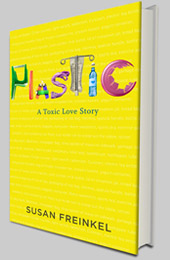An explosion at a plastics plant outside Boston on Sunday made me wonder again about the safety of the plastics industry. Historically, it was rife with hazards: fires were so common in early celluloid factories that workers were continually dousing themselves with water. And up through the 1970s, high exposures to vinyl chloride put vinyl workers at risk for a rare form of liver cancer. The Occupational Safety and Health Administration raised the threshholds for exposure and since then no new cases of the liver cancer have been reported. Experts say the industry has improved its safety record.
Plastics is still not a risk-free business. I spent some time today going through archives of the trade paper “Plastic News” back to the year 2000 and found that there were a few fires and explosions almost every year. Some have caused significant loss of life, such as a 2004 explosion at a Formosa plant in Illiopolis, IL in which five people were killed or a 2003 blast and fire at a composite molding plant in Kentucky in which seven people died.
When I looked at data collected by the Occupational Safety and Health Administration, plastics comes up far less risky than a lot of other fields. There were 15 fatalities in plastics manufacturing in 2009, which is far fewer than notoriously dsangerous occupations like farming (278 deaths that year), mining (101), construction (816) or metal fabrication. Still, making plastics cost more lives than the making of paper (10 deaths) or concrete (14 deaths).
A new kind of risk may be rearing its ugly head — occupational exposure to the long-term effects of endocrine disrupting chemicals. For instance, studies by researchers looking at a group of 427 Chinese factory workers found those who were exposed to high levels of bisphenol A were more likely to suffer erectile dysfunction and other sexual problems than men at factories where no BPA was present.



